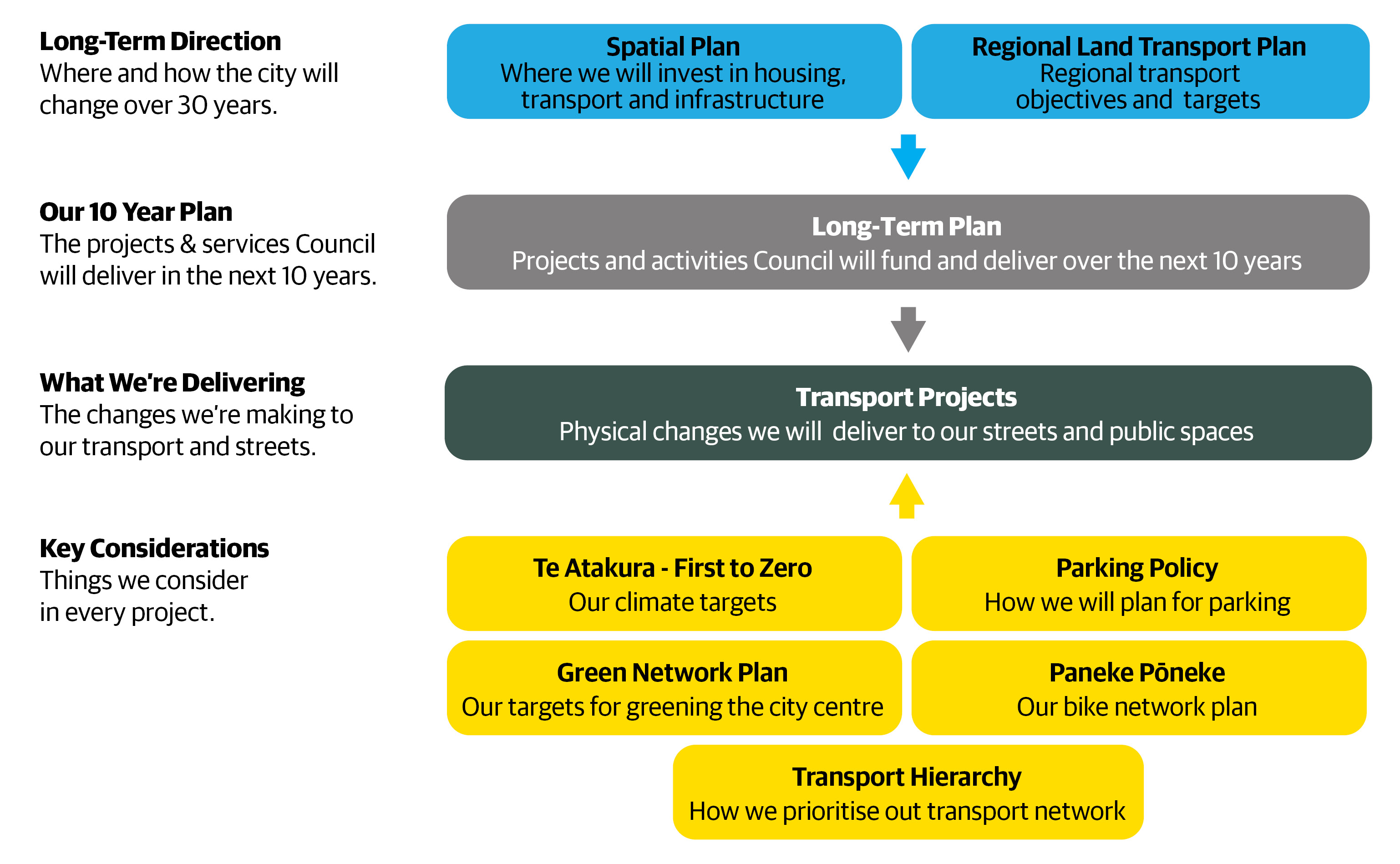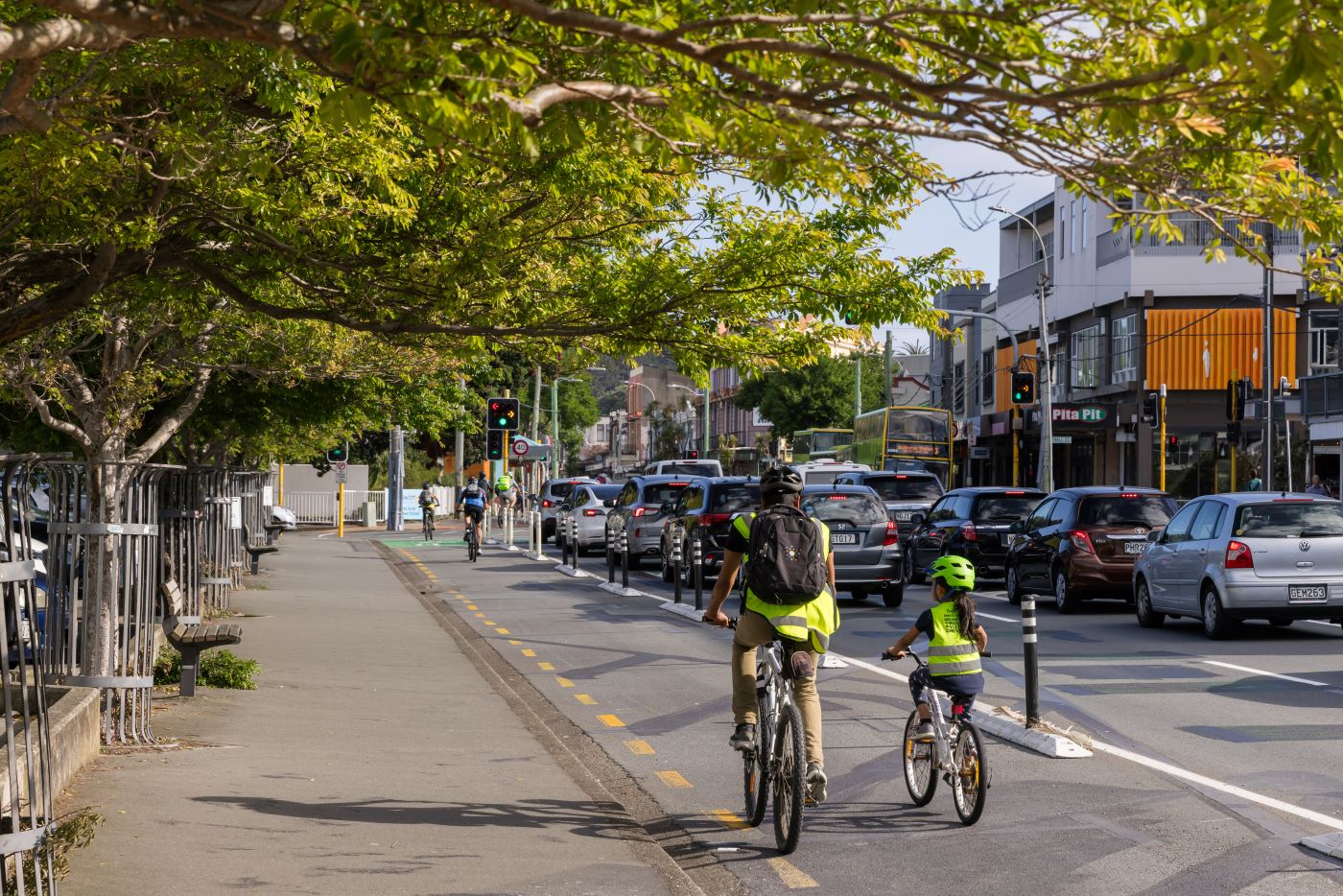Our strategic direction
We're turning Council's strategies into action, delivering on the vision and principles set out by our communities and leaders.

Our long-term direction
These key documents set the direction for where and how the city will change over the next 30 years.
10 year plan
Informed by the long-term direction set by the Spatial Plan and Regional Land Transport Plan, this plan outlines the projects and services we'll deliver in the next 10 years.
What we're delivering
Key considerations
These are the key things we consider in every project:
